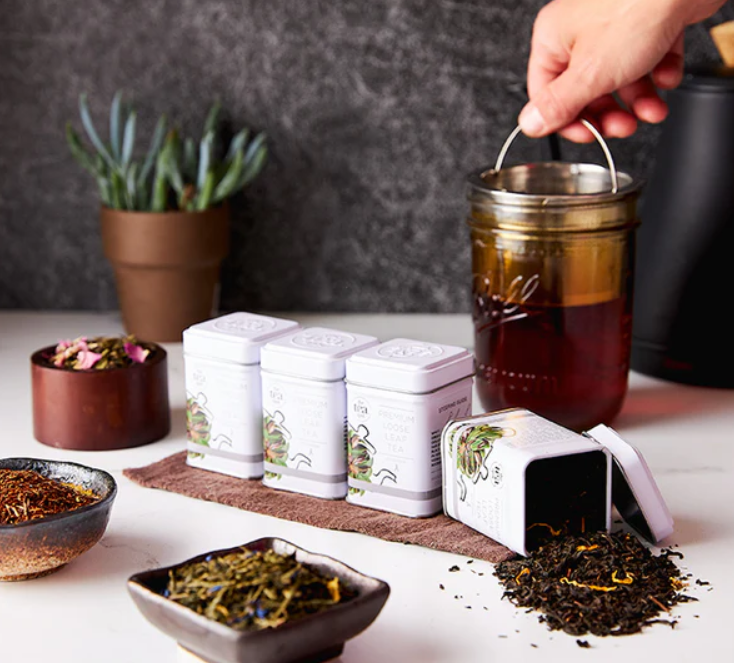Tea has long been a beloved beverage for its calming nature and rich cultural significance. However, with the rise in popularity of this beverage, ensuring the tea you’re buying is of premium quality has become more critical than ever. What makes a tea truly exceptional? How can you identify its superiority amidst countless options available?
- Whole and Uniform Leaves Indicate Superior Quality
- The Aroma Offers an Immediate Insight
- Brewing Brings Out the Best in Premium Tea
- Taste: The True Test of Quality
- Multiple Infusions Reflect Richness
- Ethical Sourcing Ensures Authenticity
- Storage and Packaging: Key to Freshness
- Visual Quality After Brewing
- Finding Exceptional Tea Sources
Identifying premium loose leaf tea requires understanding several distinct features that distinguish high-quality offerings from mediocre ones. From its appearance to its aroma, every aspect of the tea tells a story about its origin, processing, and freshness. Let’s explore the characteristics that define exceptional loose-leaf tea.
Whole and Uniform Leaves Indicate Superior Quality
The first clue to premium loose-leaf tea is its visual appearance. High-quality teas feature whole leaves that are consistent in size and shape. These leaves are typically handpicked, ensuring minimal damage during the harvesting process. Broken or uneven leaves often have a less refined taste, as they may have lost essential oils during processing.
Colour also plays a vital role. Fresh, green, black, or oolong teas display vibrant hues. Green tea should appear bright and lively, while black tea often showcases rich, deep tones. Dull or faded leaves can indicate poor storage or lower-grade materials. While appearance provides the first clue, the aroma of tea offers a deeper insight into its quality.
The Aroma Offers an Immediate Insight
A tea’s fragrance is a strong indicator of its quality. The premium tea has a fresh and distinct aroma that aligns with its type. Green teas may carry vegetal or grassy notes, while black teas often have malty, fruity, or smoky scents. Floral or herbal teas, such as jasmine or chamomile, should exhibit their signature fragrances clearly and naturally. Stale or faintly scented leaves suggest prolonged exposure to air or poor packaging. Quality tea leaves retain their aromatic compounds, providing a sensory preview of the flavours they will deliver. The fragrance sets the stage, but the true quality of tea unfolds during the brewing process.
Brewing Brings Out the Best in Premium Tea
When steeped, premium loose-leaf tea should produce a clear and vibrant brew. The colour of the liquid reflects the tea’s freshness and purity. Green teas may yield light golden or green shades, while black teas often produce a deep amber or reddish hue. Cloudy or murky brews can signal contamination or low-grade materials. The texture of the brewed tea also matters. The colour and clarity of the brew hint at quality, but flavour is the ultimate measure.
Taste: The True Test of Quality
The flavour profile of loose-leaf tea is perhaps its most important quality marker. Premium teas have a balanced, complex taste that lingers pleasantly on the palate. They often provide subtle notes that evolve with each sip, creating a multidimensional experience. Low-quality teas, on the other hand, may taste flat, bitter, or overly astringent. These issues often arise from poor processing or the use of subpar leaves. A great flavour profile is just the beginning; premium teas shine across multiple infusions.
Multiple Infusions Reflect Richness
Another hallmark of premium tea is its ability to retain flavour across multiple infusions. High-quality teas are designed to be steeped several times, with each brew revealing new layers of flavour and aroma. This is especially true for varieties like oolong and pu-erh, which are prized for their evolving profiles. If a tea loses its taste or becomes watery after one steeping, it’s likely of lower quality. Investing in a tea that can be brewed multiple times enhances your enjoyment and offers better value. Behind every rich infusion is the story of its sourcing and cultivation.
Ethical Sourcing Ensures Authenticity
The source of the tea also significantly determines its quality. Reputable brands and producers often emphasise ethical farming practices and sustainable cultivation methods. Tea grown in specific regions, such as Darjeeling, Assam, or Uji, has unique characteristics influenced by the local climate and soil. Look for teas that provide clear information about their origin and processing methods. Even the best-sourced tea requires proper storage to preserve its quality.
Storage and Packaging: Key to Freshness
The way tea is stored and packaged significantly affects its quality. Leaf tea should be kept in airtight containers to preserve its natural oils and prevent moisture absorption. High-quality teas are often sold in resealable bags or tins that protect them from light and air. Improperly stored tea can lose its freshness, resulting in a stale taste and aroma. When purchasing tea, ensure the packaging provides adequate protection to maintain its integrity over time. The care in storage and packaging is evident in how tea leaves perform after brewing.
Visual Quality After Brewing
The state of the leaves after steeping can also reveal much about the tea’s quality. Once brewed, high-grade leaves unfurl fully and return to a shape similar to their original form. This indicates careful processing and minimal damage. Leaves that remain tightly curled or appear fragmented may belong to a lower-quality batch. Understanding these qualities makes finding reliable sources even more important.
Finding Exceptional Tea Sources
Exploring specialised retailers is invaluable for tea enthusiasts seeking a curated selection of loose-leaf varieties. These shops often offer diverse teas sourced from trusted growers, ensuring premium quality and authentic flavours. Retailers focusing on quality provide the perfect opportunity to discover teas that align with your personal preferences, from bold black teas to delicate herbal blends.
Loose leaf tea provides an authentic and enjoyable journey for tea enthusiasts. Its vibrant appearance, captivating aroma, and rich flavour identify premium quality. With careful selection, your tea-drinking rituals can become more rewarding and satisfying.















